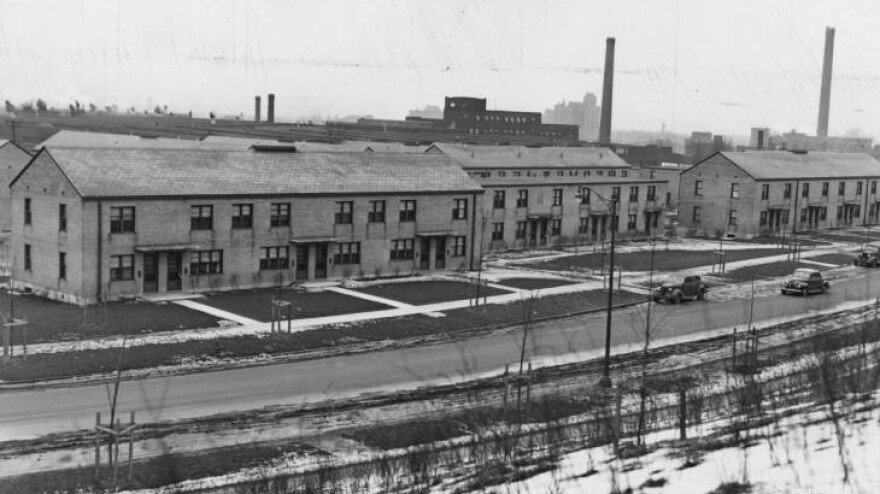Marilyn Burns has lived at Woodhill Homes for 13 years, around here she’s known as Miss Marilyn.
“And we just sort of sit outside and chill, a little shots or something is fired, we go in the house and then we come outside again," said Burns, during a walk through the grounds.
Burns started at the splash park behind the community center and walked toward her home around the corner, while kids ran by on the narrow sidewalks and young mothers sat and talked on benches.
In the 1930s, the City of Cleveland established the country’s first public housing agency and built some of the first housing projects.
One of the first was Woodhill Homes, where the Cuyahoga Metropolitan Housing Authority is now planning a transformation.
First, Burns hopes the look of the place gets a makeover, maybe expand the porches outside each front door from the narrow concrete stoops they have now.
“Getting rid of these old trees that are around here, cutting those down might make a difference,” said Burns.
Woodhill Homes was built in 1940, 487 units in a collection of two-story brick buildings that look like barracks, fenced off from the neighborhood at the top of a hill on Woodland Avenue.
“It looks like a prison camp, where we're all huddled together, the masses. I would change the look of the windows, the doors, give it an upbeat look,” said Burns.
In the 1930’s, Cleveland and , were pioneers in getting housing built to replace the shantytowns occupied by the workers who had flocked to Cleveland earlier that century.
Bohn argued it cost the city more to respond to the many fires and other emergencies at substandard housing than it would to build new, sturdier buildings.
According to , after the first public housing developments were built, the standards went down.
“If you were given $25 a square foot, they wouldn't care if the walls were paper, if they can get $25 a square foot out of it,” said Madison.
The 94-year-old Madison was the first African American architect to graduate from Western Reserve University.
Madison founded his own architecture company because he says no one would hire a black architect back then.
During his career, among his many projects, he built public housing for seniors in Northeast Ohio and did what he could to go beyond the bare requirements.
“Try to create some units so that there is, this my court and another court, rather than just one barracks after another. This is not an army camp, this is housing,” said Madison.
At a recent public meeting at the Woodhill Homes Community Center, a few Woodhill Homes residents gathered to talk about what changes they’d like to see.
They wanted improvements including public safety enhancements, better lighting, more attractive landscaping and facades, more amenities in the neighborhood.
CMHA and The Department of Housing and Urban Development organized the meeting.
to embark on a two-year planning process for Woodhill Homes and the neighborhood around it.
“So now we have the opportunity to really invest in this area and really have the type of investment and put together the type of plan so this community gets what it deserves,” said Blaine Griffin, councilman for this area, during the public meeting.
On a summer afternoon in June, Griffin visited Woodhill as kids waited for CMHA to turn on a splash park on the ground for the first time this summer.
“We're really trying to break up clusters of poverty and really trying to make these types of neighborhoods inclusive of the surrounding neighborhoods. And that's something that this planning grant will help us do,” said Griffin.
Griffin sees a mix of market rate and affordable housing coming in. He says it’s less likely that new publicly funded housing would be built.
According to CMHA, what happens at Woodhill Homes depends on the planning process going on right now and lasting until 2020.



![Marilyn Burns with neighbors outside her apartment at Woodhill Homes. [Matt Richmond / ideastream]](https://npr.brightspotcdn.com/dims4/default/2f76179/2147483647/strip/true/crop/1551x872+0+0/resize/880x495!/quality/90/?url=http%3A%2F%2Fnpr-brightspot.s3.amazonaws.com%2Flegacy%2Fuploads%2F2018%2F6%2F28%2Fmarilynburns_web.jpg)





